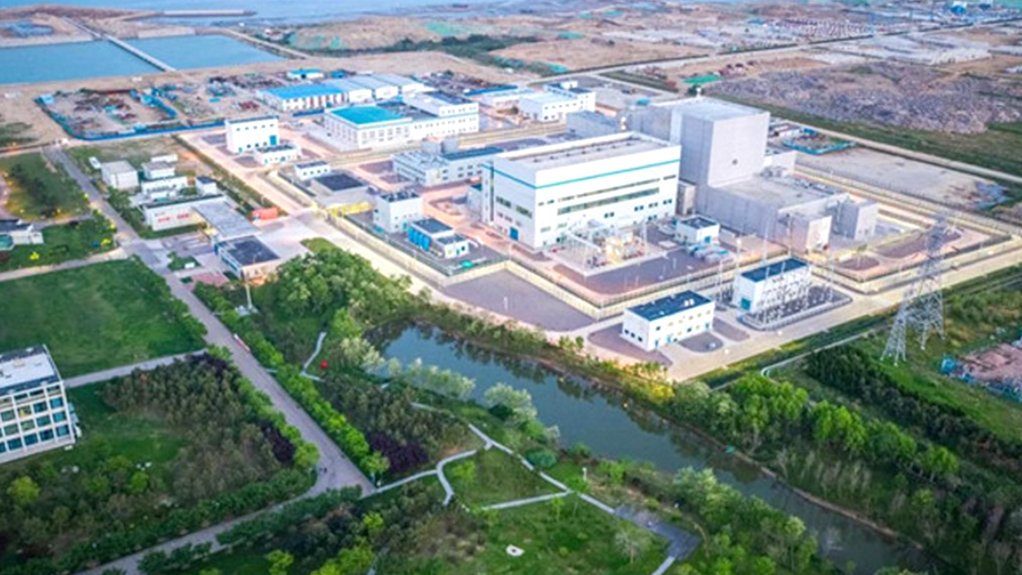A pebble bed modular reactor nuclear power plant reaches full power – in China
The world’s first pebble bed modular reactor (PBMR) nuclear power plant (NPP) achieved full initial power on Friday, World Nuclear News has reported. It is located at Shidaowan in Shandong province in China. The NPP comprises two PBMR units, each of 250 MWt capacity, together driving a single 210 MWe steam turbine.
There was a time when South Africa was the (not merely a) world leader in PBMR development. Indeed, in March 2009 Chinese entities, including Tsinghua University’s Institute of Nuclear Energy Technologies (INET), and technology company Chinergy, signed a memorandum of understanding with South Africa’s PBMR company, permitting cooperation in PBMR and related technologies. But while INET went on to build a 10 MWt pilot PBMR unit, which started operation in 2000 and reached full power in 2003, South Africa effectively terminated its PBMR programme in 2009.
In China, the PBMR is designated as the High Temperature gas-cooled Reactor – Pebble bed Module (HTR-PM). PBMRs indeed operate at high temperatures and use gas (in this case, helium) as the reactor coolant, and not water. Graphite is the material used to moderate the nuclear chain reactions. The fuel is in the form of small spheres (hence the name ‘pebble bed’), 60 mm in diameter, each containing 7 g of low (8.5%) enriched uranium fuel, coated with four layers of ceramics and graphite. The fuel load for each reactor comprises about 12 000 such pebbles.
The HTR-PM has been built and is operated by a consortium of three organisations. INET is the research and development leader, with a share of 20%. The largest shareholder, at 47.5%, is State-owned power generation group China Huaneng (reportedly one of the five biggest State-owned electricity utilities in China). The remaining shareholder, with 32.5%, is the China Nuclear Engineering Corporation, which is a subsidiary of the State-owned China National Nuclear Corporation.
The first of the two PBMRs at Shidaowan first reached criticality in September last year, followed by the second during November last year. The first reactor was connected to the grid a year ago (in December 2021). But now the NPP has finally reached what the consortium is calling “initial full power”.
“[T]his operating state has verified that all systems of the demonstration project meet the design functions, laying the foundation for the project to be put into operation,” stated the consortium. This initial full power condition “tested the operational control capability” of the NPP in “two reactors with one machine [turbine]” mode, thereby “laying the foundation for future commercial operation”.
The consortium is already considering a scaled-up PBMR NPP, designated the HTR-PM600. This would involve six PBMR modules driving a single 650 MWe turbine.
Article Enquiry
Email Article
Save Article
Feedback
To advertise email advertising@creamermedia.co.za or click here
Comments
Announcements
What's On
Subscribe to improve your user experience...
Option 1 (equivalent of R125 a month):
Receive a weekly copy of Creamer Media's Engineering News & Mining Weekly magazine
(print copy for those in South Africa and e-magazine for those outside of South Africa)
Receive daily email newsletters
Access to full search results
Access archive of magazine back copies
Access to Projects in Progress
Access to ONE Research Report of your choice in PDF format
Option 2 (equivalent of R375 a month):
All benefits from Option 1
PLUS
Access to Creamer Media's Research Channel Africa for ALL Research Reports, in PDF format, on various industrial and mining sectors
including Electricity; Water; Energy Transition; Hydrogen; Roads, Rail and Ports; Coal; Gold; Platinum; Battery Metals; etc.
Already a subscriber?
Forgotten your password?
Receive weekly copy of Creamer Media's Engineering News & Mining Weekly magazine (print copy for those in South Africa and e-magazine for those outside of South Africa)
➕
Recieve daily email newsletters
➕
Access to full search results
➕
Access archive of magazine back copies
➕
Access to Projects in Progress
➕
Access to ONE Research Report of your choice in PDF format
RESEARCH CHANNEL AFRICA
R4500 (equivalent of R375 a month)
SUBSCRIBEAll benefits from Option 1
➕
Access to Creamer Media's Research Channel Africa for ALL Research Reports on various industrial and mining sectors, in PDF format, including on:
Electricity
➕
Water
➕
Energy Transition
➕
Hydrogen
➕
Roads, Rail and Ports
➕
Coal
➕
Gold
➕
Platinum
➕
Battery Metals
➕
etc.
Receive all benefits from Option 1 or Option 2 delivered to numerous people at your company
➕
Multiple User names and Passwords for simultaneous log-ins
➕
Intranet integration access to all in your organisation

















